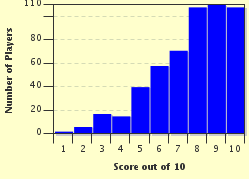Quiz Answer Key and Fun Facts
1. Principally found in Northern Africa and the Middle East, these people are known as desert-dwellers. They are individuals that consist of tribes or clans which are part of the Arab pan-ethnicity. Which group is this that might you encounter while on an excursion in the Sahara Desert?
2. This group of indigenous people can be found in the Arctic regions of Greenland, Canada and the United States, and are often referred to as Eskimos. What is the name of these Aboriginal people that you would likely meet during your trip to Nunavut?
3. Originally part of the Mongol Empire and the Turkic Peoples of the former Russian Empire, this group of people are in modern times chiefly located in Russia. The majority of their population can be found in the Volga region comprising the Republics of Tatarstan and Bashkortostan. What would be this group of people you might come across while on a visit to the city of Kazan?
4. This family of people are Berber-speaking nomads living predominantly in the Saharan interior of North Africa. They are pastoralists who mainly inhabit Niger, Algeria and Mali. Who are these people that you might run into while touring Timbuktu in your Volkswagen luxury SUV?
5. This clan of people emerged in an area between the Ural Mountains and the Volga River and invaded the Carpathian Basin in an effort to create an independent existence in the ninth century. Who are these tribe of people that one might have met during the establishment of the Principality of Hungary?
6. Highly esteemed as top mountaineers, this group of people serve as guides to explorers in their quest to climb Himalayan mountains. Who are these mountain guides that you would hire in Kathmandu while preparing for an ascent of Mount Everest?
7. This South American group are residents of the pampas, Gran Chaco and the Patagonian grasslands. They are skilled herdsmen, hunters, horseriders and are prone to violence over petty matters. Who is this bunch, equivalent to American cowboys, that you might run into while on the outskirts of Buenos Aires?
8. Of Indian origin, this widely distributed ethnic group mostly inhabit regions of Central and Eastern Europe. They were characterized as laborers, fortune-tellers and gossippers, and led a migratory lifestyle with old horses and wagons. Who is this group, otherwise known as gypsies, that you might happen on while on a visit to Bulgaria?
9. During the thirteenth century Polynesian settlers migrated to New Zealand. After centuries of isolation they developed their own culture and became a newly-formed indigenous group. What is this self-named group that would greet you with "Kia Ora!" during a meeting in Rotorua?
10. Located along the coastal areas of the North Sea, this Germanic ethnic group is native to Germany and the Netherlands. In modern times they consist of three separate parts due to territorial divisions from the Middle Ages. Who are these people that you might encounter while exploring around the German Bight?
Source: Author
lout62001
This quiz was reviewed by FunTrivia editor
stedman before going online.
Any errors found in FunTrivia content are routinely corrected through our feedback system.

